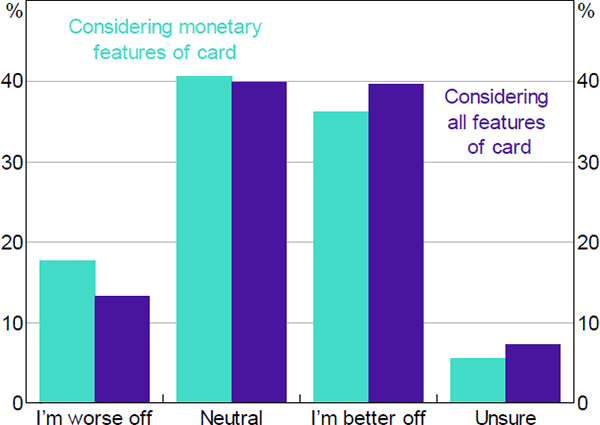RDP 2018-11: Consumer Credit Card Choice: Costs, Benefits and Behavioural Biases Appendix A: Monetary and Non-monetary Benefits
October 2018
- Download the Paper 1.7MB
This paper calculates the net monetary benefit of respondents' main credit card. As noted in Section 2, the net monetary benefit is not necessarily equivalent to the consumer's total benefit (or consumer surplus) from their card. But the survey evidence suggests they are very closely related.
In the 2016 Consumer Payments Survey, respondents were asked first about the monetary value of their card (weighing up the monetary costs and benefits), and then about the total value of their card (including both monetary and non-monetary costs and benefits). Most respondents gave the same answer to both questions. The share who reported they were better off on net was only slightly higher when respondents were asked to consider both monetary and non-monetary features, than when they considered monetary features alone (Figure A1). This suggests that my estimated net monetary benefit can be considered a close approximation of consumers' overall benefit from their card, and is consistent with the vast majority of respondents having fee-free access to most non-monetary card benefits through a debit card.

Source: Author's calculations, based on data from Ipsos and RBA